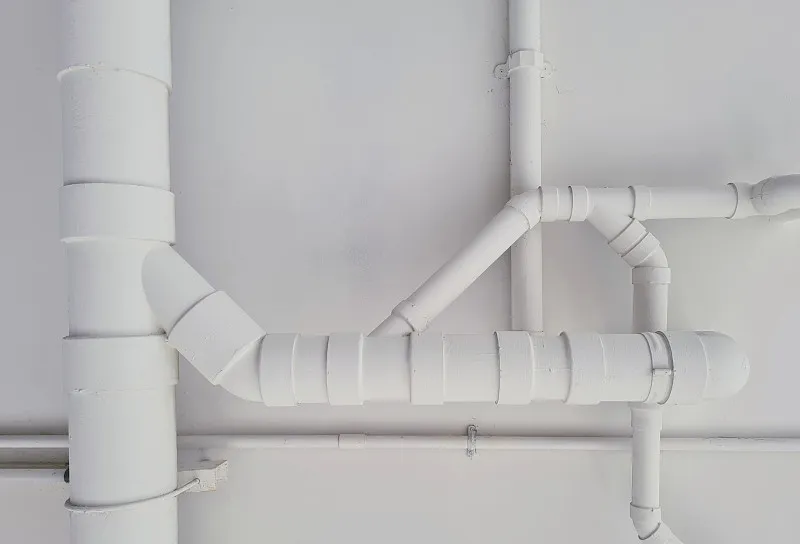Introduction
In the ever-evolving landscape of the construction and plumbing industries, the plastic pipes and fittings market has emerged as a significant player. Valued at a staggering USD 67.5 billion, this market is witnessing unprecedented growth driven by various factors, including urbanization, infrastructure development, and a shift towards sustainable building practices. This article explores the current state of the global plastic pipes and fittings market, the driving forces behind its growth, challenges, and future prospects.
Understanding Plastic Pipes and Fittings
What Are Plastic Pipes and Fittings?
Plastic pipes and fittings serve as essential components in plumbing, drainage, and various industrial applications. They come in various materials, with the most common being:
- Polyvinyl Chloride (PVC): PVC, known for its versatility and durability, finds wide use in water supply and drainage systems.
- Polyethylene (PE): Flexible and resistant to corrosion, PE often finds use in gas and water pipelines.
- Polypropylene (PP): Known for its chemical resistance, PP is ideal for industrial applications.
Applications of Plastic Pipes and Fittings
Plastic pipes and fittings are used across numerous applications, including:
- Residential plumbing: For water supply and drainage systems.
- Irrigation systems: In agriculture to manage water supply efficiently.
- Sewage systems: For effective waste management in urban settings.
- Industrial applications: In chemical processing and other industries requiring specialized piping solutions.
Market Overview
Current Market Valuation
As mentioned, the global plastic pipes and fittings market is valued at USD 67.5 billion. This valuation reflects the robust demand across various sectors, including construction, infrastructure, and agriculture.
Market Growth Drivers
Several factors contribute to the growth of the plastic pipes and fitting market:
- Urbanization and Infrastructure Development: Rapid urbanization leads to increased construction of residential and commercial buildings, driving the demand for reliable plumbing solutions.
- Sustainable Practices: There is a growing emphasis on eco-friendly materials in construction. Plastic pipes and fittings, being recyclable and lightweight, align well with sustainability goals.
- Technological Advancements: Innovations in manufacturing processes and materials enhance the performance of plastic pipes, making them more appealing to consumers.
- Cost-Effectiveness: Compared to traditional materials like metal and concrete, plastic pipes offer a more affordable solution for many applications, thereby increasing their adoption.
Regional Analysis of the Market
North America
In North America, the plastic pipes and fitting market is primarily driven by infrastructure upgrades and residential construction. The demand for PVC and PE pipes is particularly high due to their durability and resistance to corrosion.
Europe
Europe is experiencing growth in the plastic pipes market, especially with increasing regulations focused on sustainability. The European Union’s commitment to reducing carbon emissions fuels the adoption of eco-friendly materials in construction.
Asia-Pacific
The Asia-Pacific region is witnessing the most significant growth in the plastic pipes and fitting market. Rapid urbanization, coupled with government initiatives to improve water supply and sanitation, drives this growth. Countries like China and India are major contributors due to their extensive infrastructure projects.
Latin America and the Middle East
In Latin America and the Middle East, infrastructure development is on the rise, leading to increased investments in plastic pipes and fitting. The need for effective irrigation systems in agriculture also supports market growth in these regions.
Challenges Facing the Plastic Pipe and Fittings Market
Despite its growth, the plastic pipes and fittings market faces several challenges:
Environmental Concerns
The production and disposal of plastic products raise environmental concerns. Issues like plastic waste and pollution can affect public perception and lead to stricter regulations.
Competition from Alternative Materials
While plastic pipes offer numerous advantages, they compete with alternative materials like metal and concrete, which remain preferred in certain applications for their strength and longevity.
Regulatory Hurdles
The industry must navigate various regulations concerning safety, environmental impact, and product standards. Compliance can be challenging and costly for manufacturers.

Future Trends in the Plastic Pipe and Fittings Market
Increased Adoption of Smart Technologies
The integration of smart technologies in plumbing systems is becoming a trend. Smart plastic pipes equipped with sensors can monitor water flow and detect leaks, enhancing efficiency and reducing waste.
Growth of Recyclable Materials
As sustainability becomes a priority, manufacturers are focusing on producing recyclable plastic pipes. Innovations in materials that companies can easily recycle will likely shape the market’s future.
Focus on Quality and Durability
There is a growing emphasis on the quality and durability of plastic pipe and fittings. Manufacturers are investing in research and development to enhance the performance characteristics of their products.
Conclusion
The global plastic pipes and fittings market, valued at USD 67.5 billion, is poised for continued growth. Factors such as urbanization, sustainability, and technological advancements are driving demand across various sectors. While challenges exist, the market’s future appears promising, particularly with the potential for innovation and a focus on eco-friendly practices. As the industry evolves, it will be essential for manufacturers to adapt to changing consumer preferences and regulatory landscapes to maintain their competitive edge.
FAQs
- What are the primary materials used in plastic pipes and fittings?
The most common materials include polyvinyl chloride (PVC), polyethylene (PE), and polypropylene (PP), each with unique properties suited for various applications. - Why are plastic pipes considered more sustainable?
Plastic pipes have a lower carbon footprint during production, are lightweight, and are often recyclable, making them an eco-friendly choice compared to traditional materials. - What applications commonly use plastic pipes and fittings?
They are widely used in residential plumbing, irrigation systems, sewage systems, and various industrial applications. - What factors are driving the growth of the plastic pipes and fittings market?
Key factors include urbanization, infrastructure development, a shift towards sustainable building practices, and advancements in technology. - What challenges does the plastic pipes and fittings market face?
Environmental concerns, competition from alternative materials, and navigating regulatory hurdles are some of the challenges facing the industry.


















